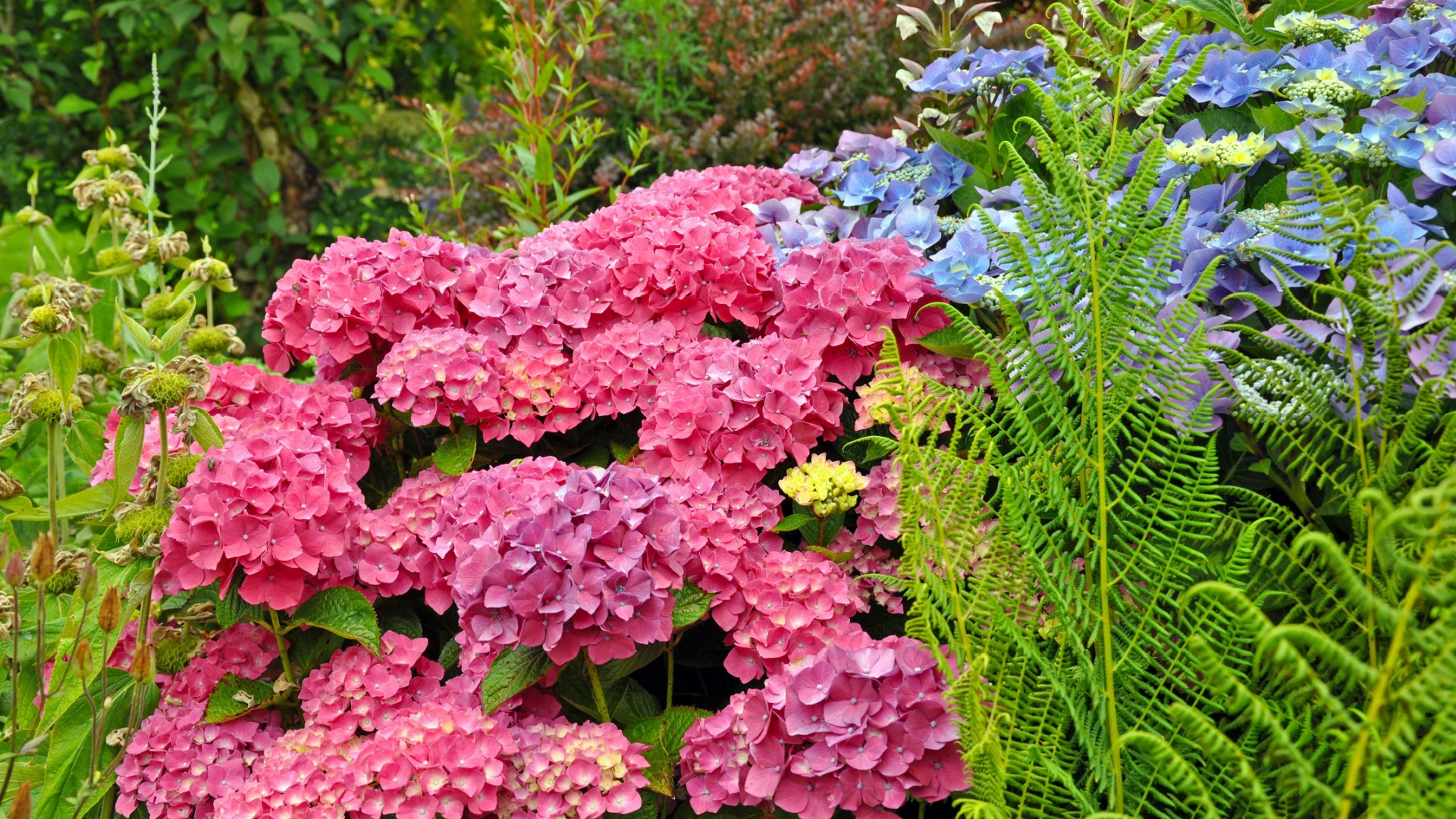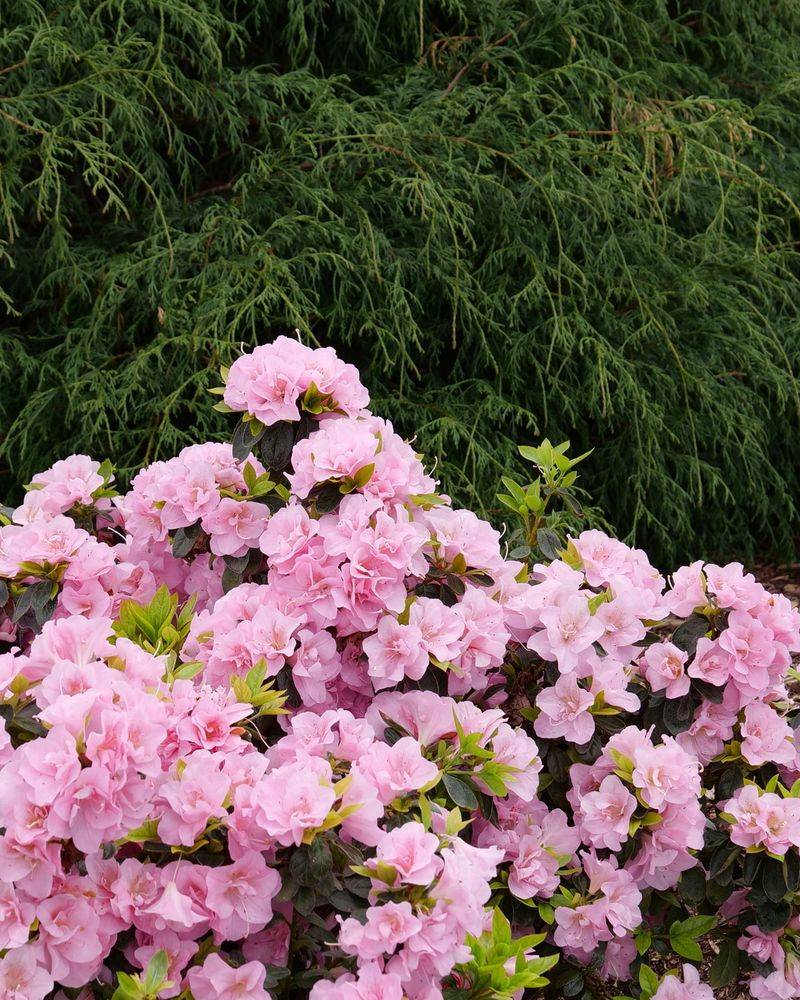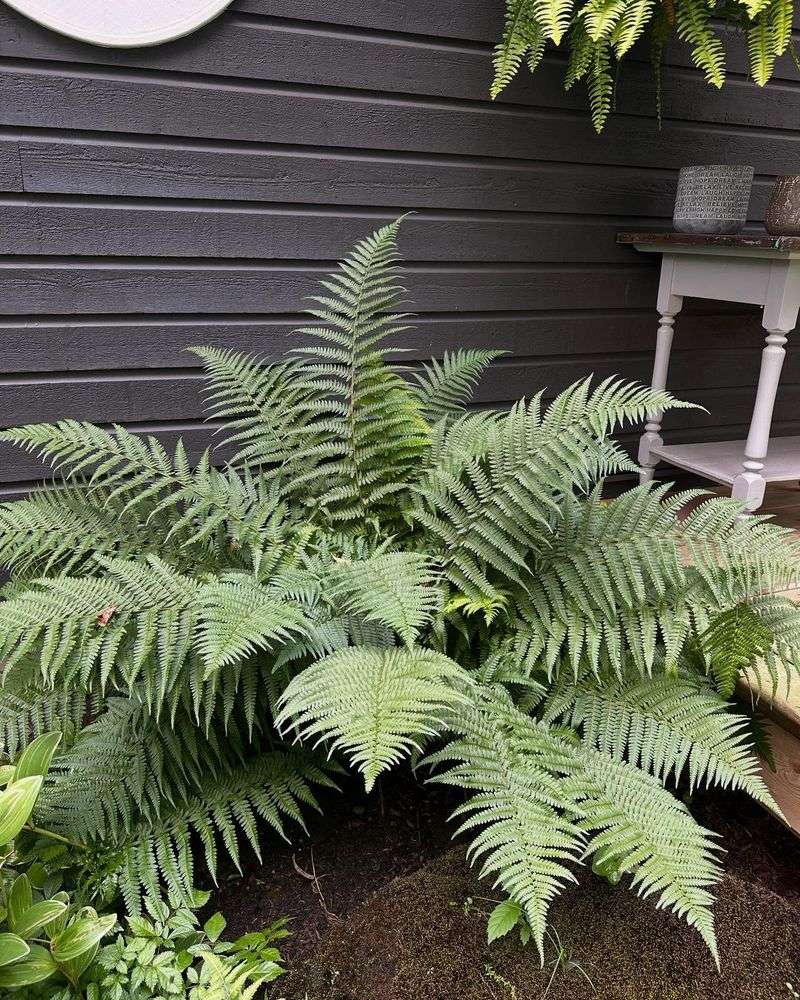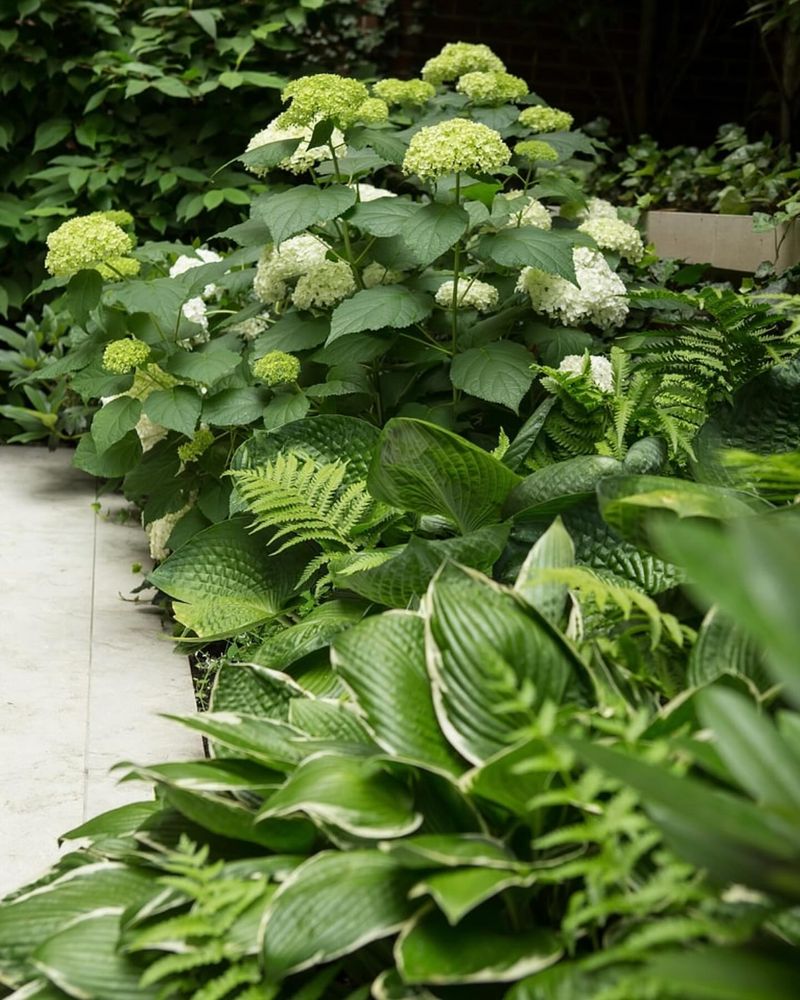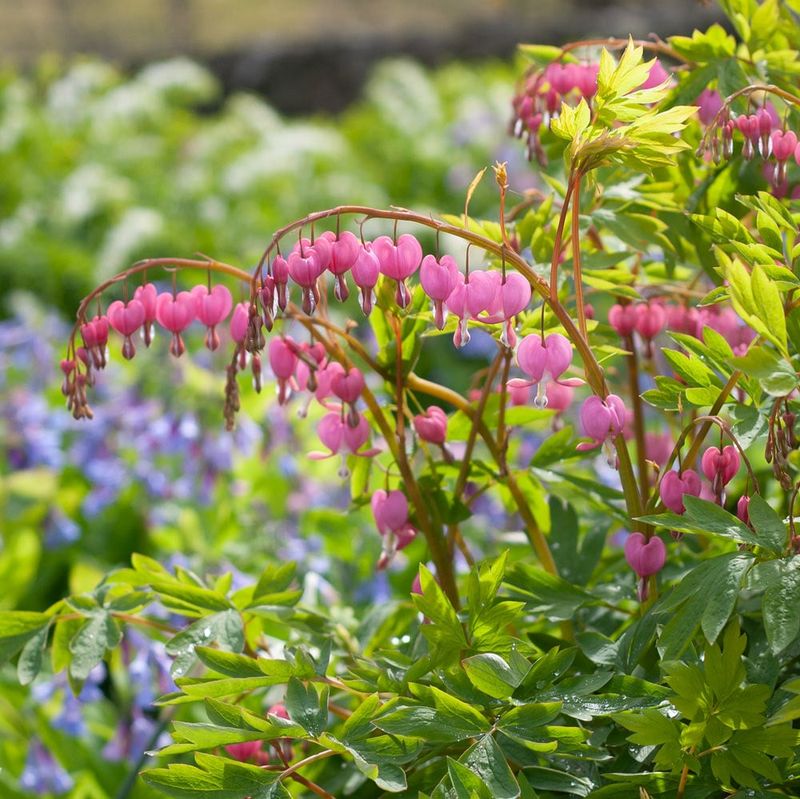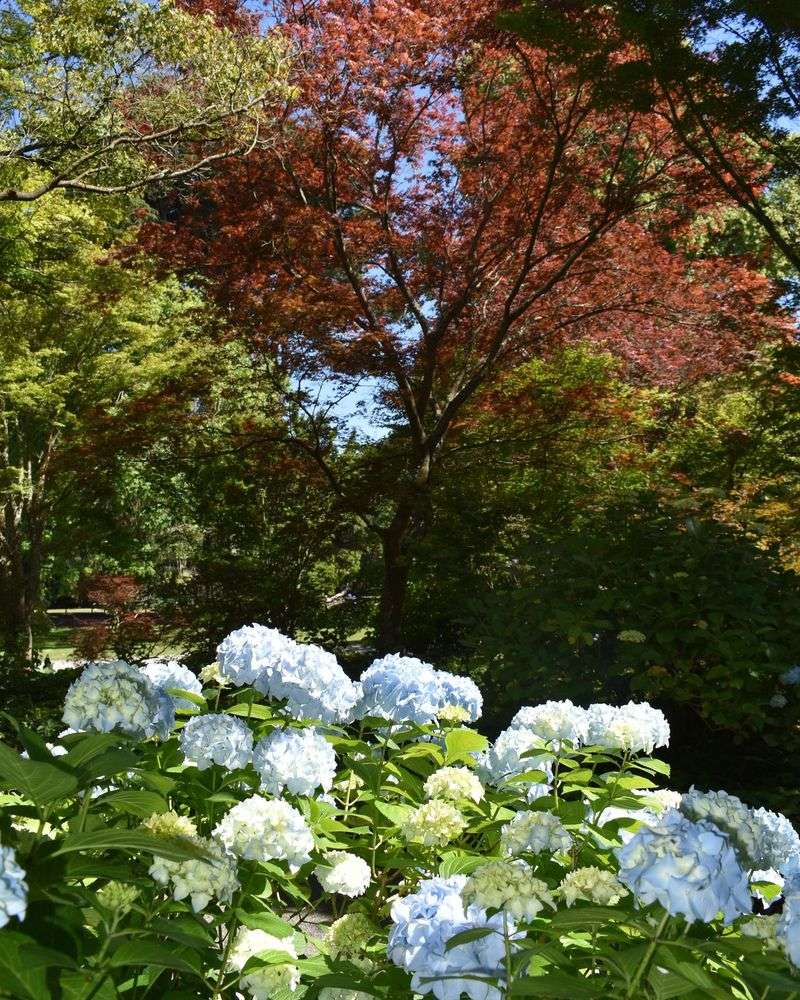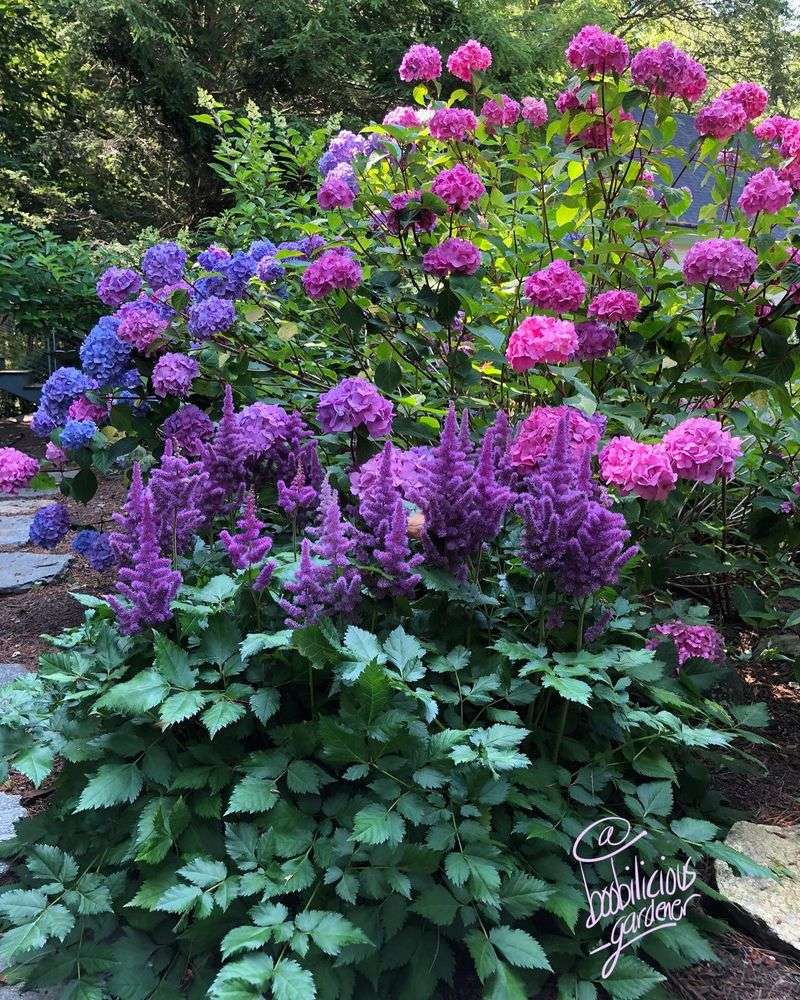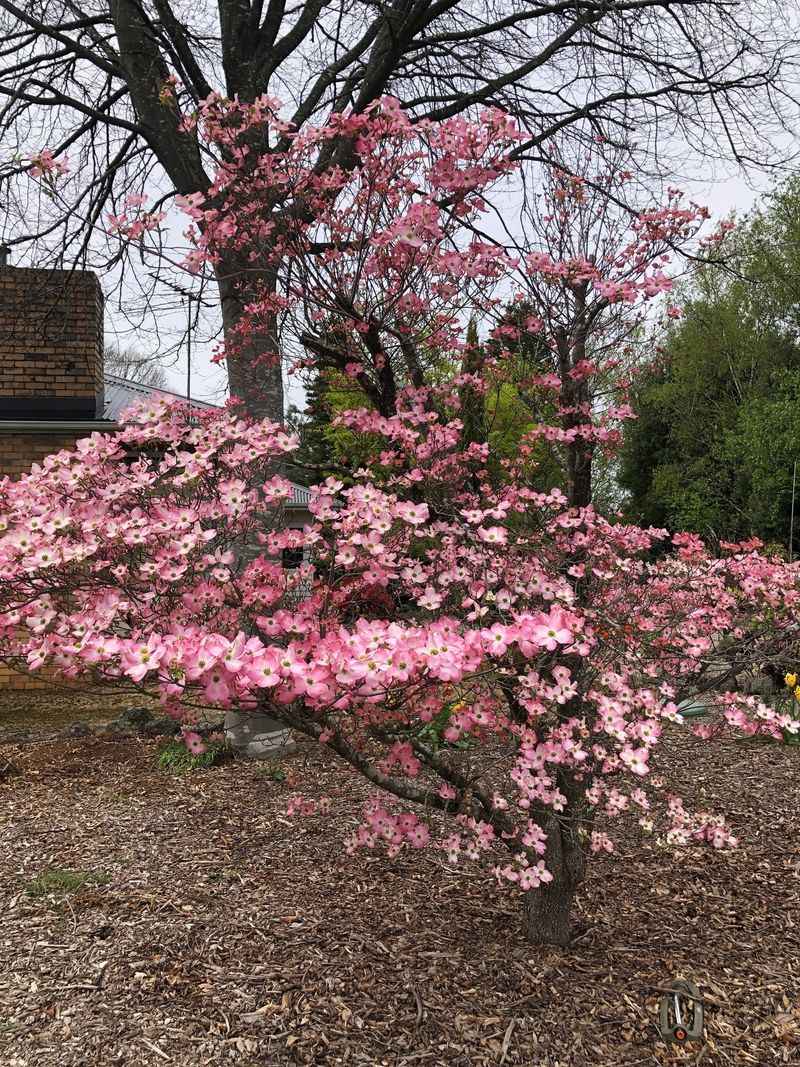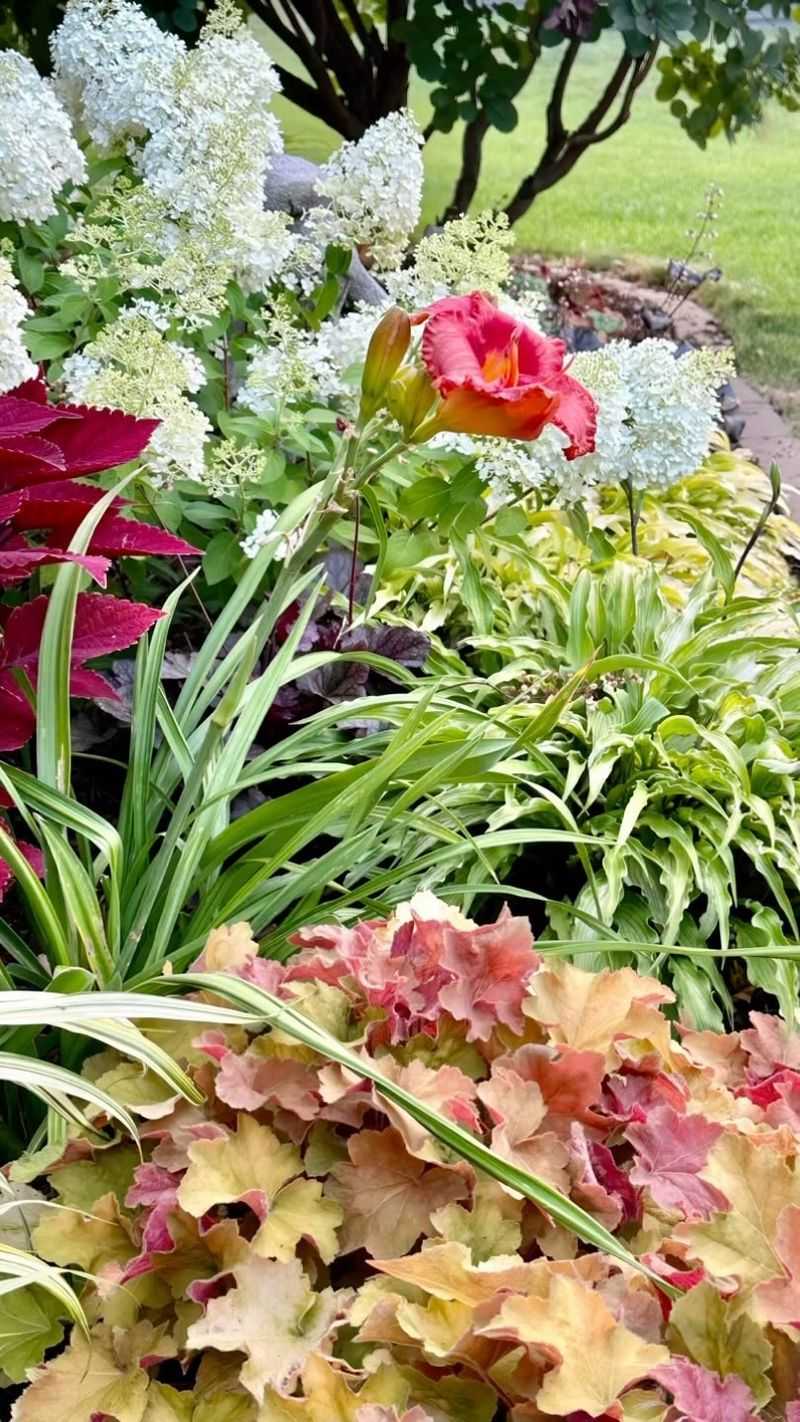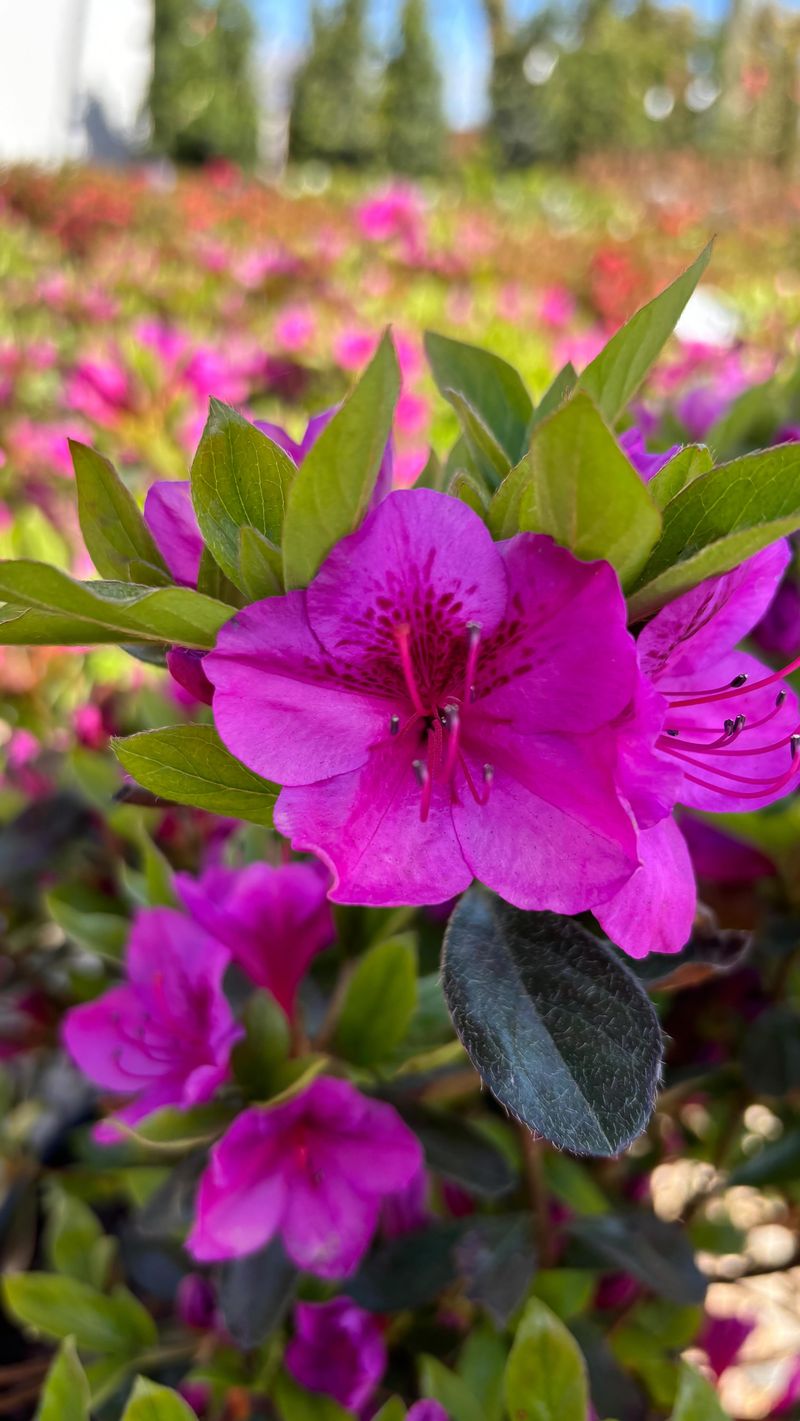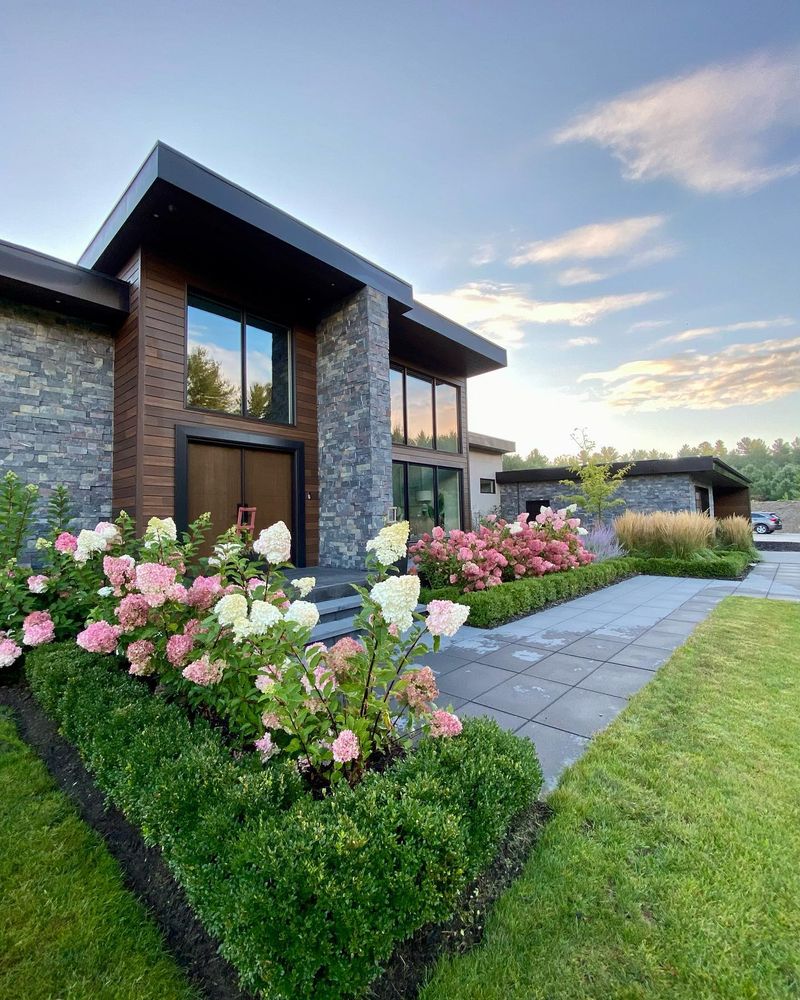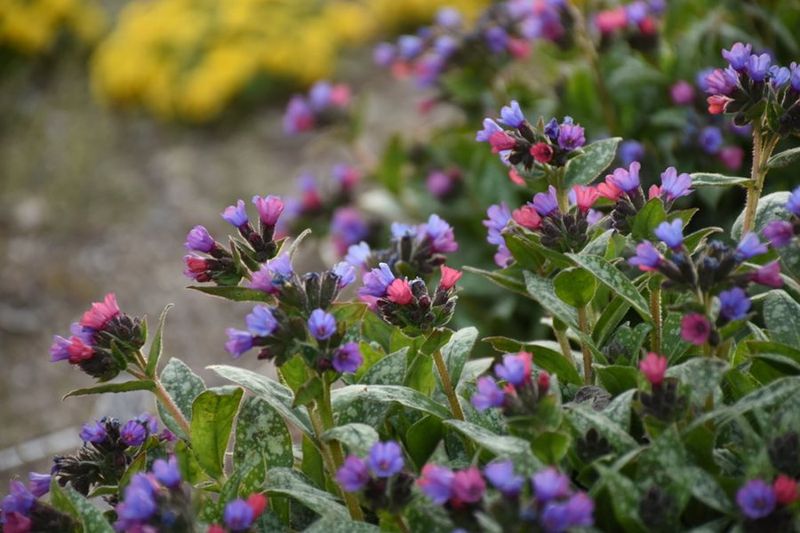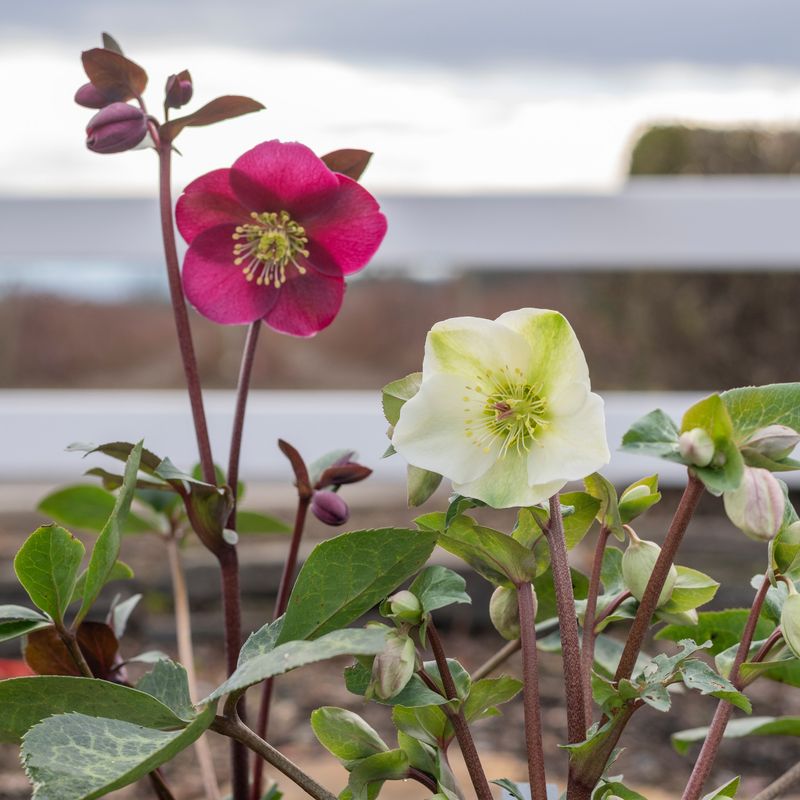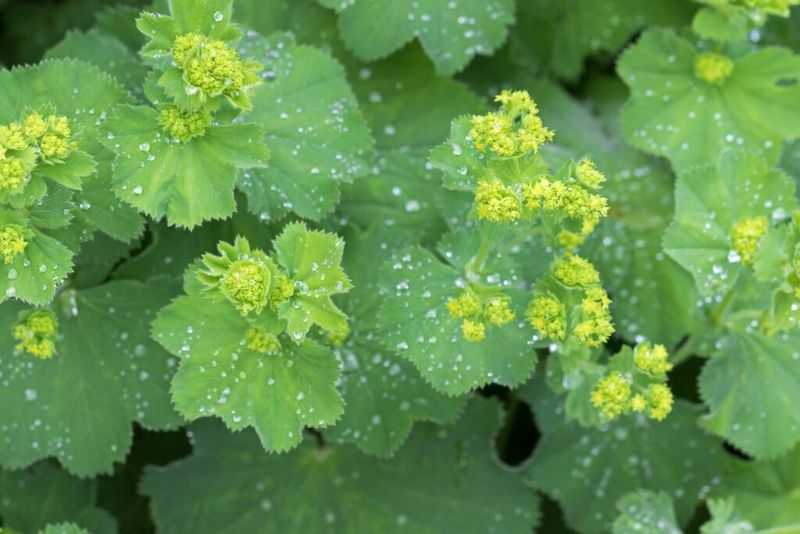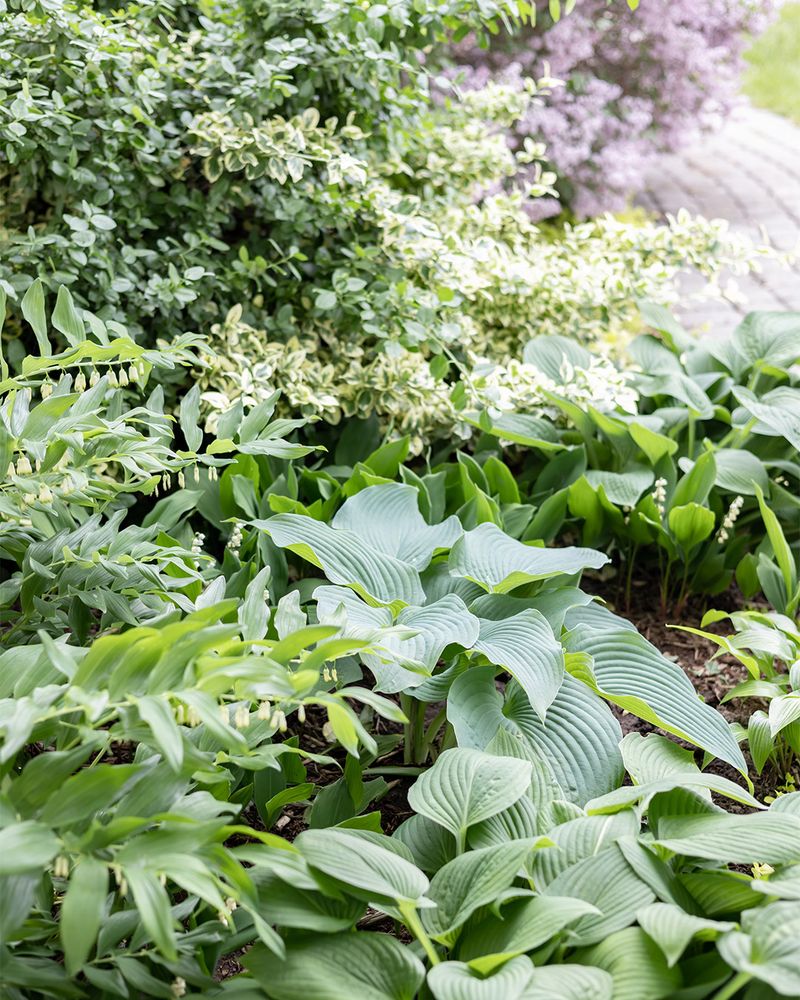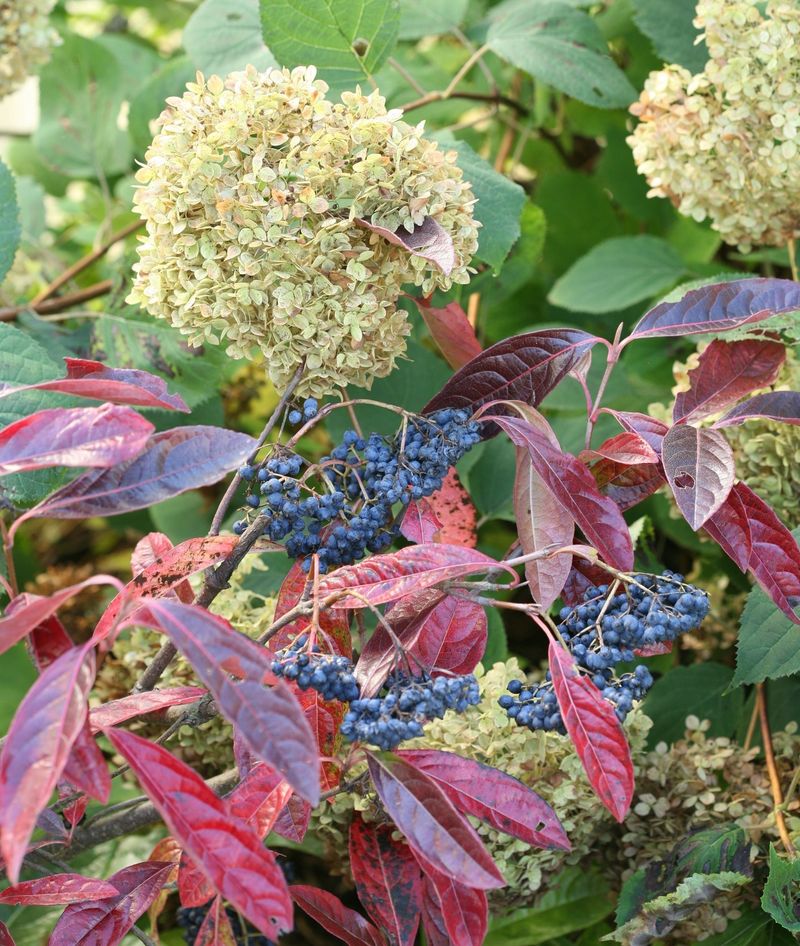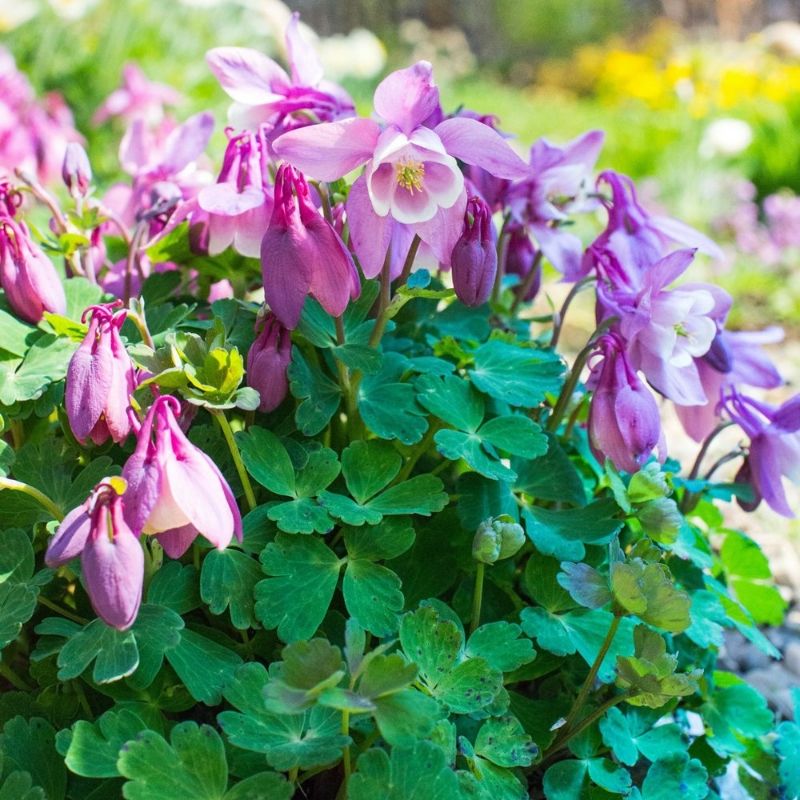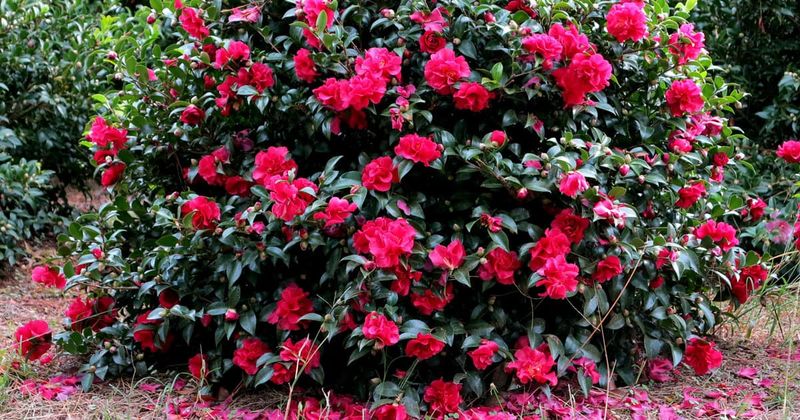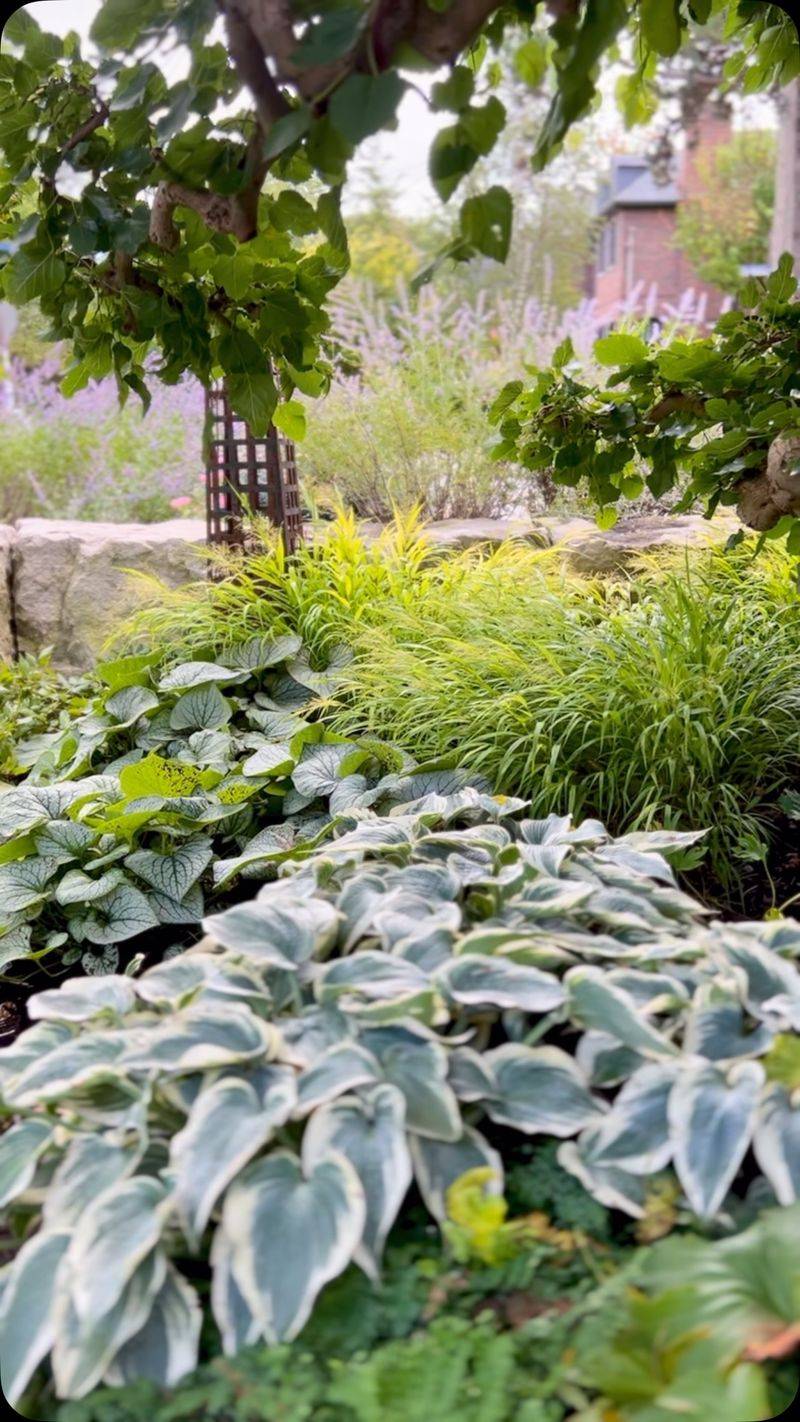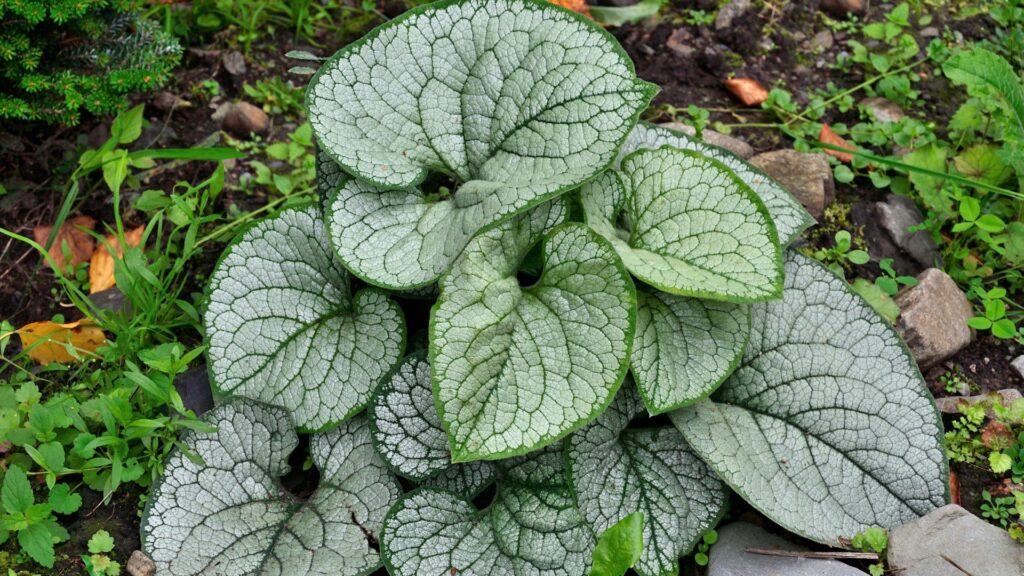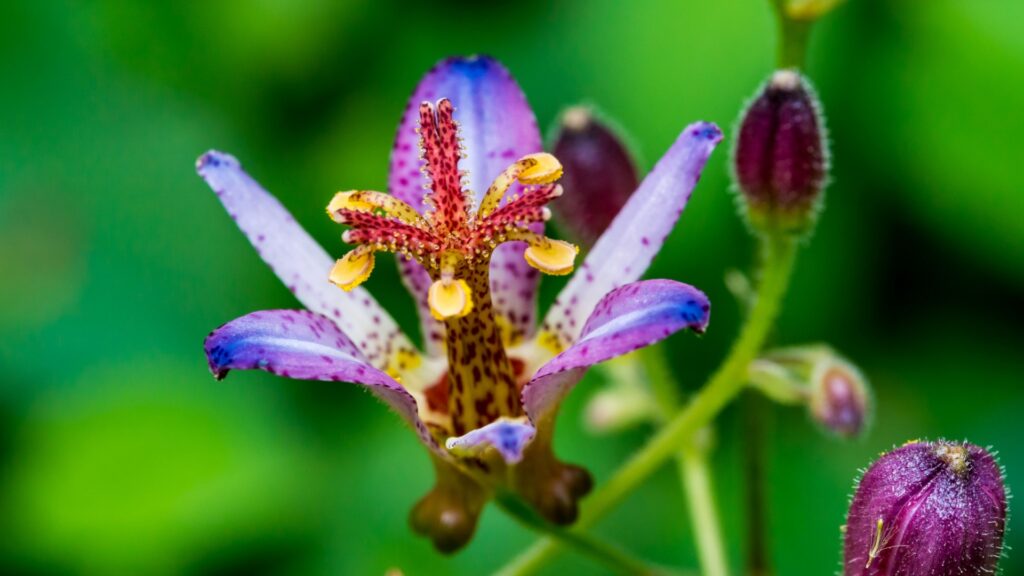Hydrangeas may steal the spotlight, but even stars need a strong supporting cast. Left to their own devices, these garden divas can struggle. Surrounding them with the right companions is like rolling out the red carpet—boosting their performance, enriching the soil, and keeping pesky intruders at bay.
Some plant partners even turn up the color volume and stretch the blooming season, making your garden a feast for the eyes from spring to fall.
These 20 green-thumb-approved companions are the dream neighbors—lifting your hydrangeas to new heights and transforming your yard into a lush, living masterpiece.
1. Azaleas Create Perfect Shade Partners
Azaleas naturally complement hydrangeas with their similar growing requirements and blooming schedules. When planted nearby, these flowering shrubs create a protective environment that filters harsh sunlight.
The partial shade they provide helps hydrangeas maintain their vibrant colors without wilting. As acid-loving plants themselves, azaleas contribute to the soil environment that hydrangeas crave.
Their spring blooms also provide a gorgeous color transition as your hydrangeas prepare to flower, extending your garden’s visual appeal across seasons.
2. Ferns Boost Soil Moisture Retention
Feathery ferns make excellent hydrangea companions by creating a natural mulch layer with their fallen fronds. These woodland natives thrive in the same partially shaded, moist conditions that hydrangeas love.
As ferns grow and spread, they help maintain consistent soil moisture levels around your hydrangeas’ roots. Their shallow root systems don’t compete aggressively for water or nutrients.
The textural contrast between ferns’ delicate fronds and hydrangeas’ bold leaves and flowers creates a visually stunning garden combination that mimics natural forest edge plantings.
3. Hosta Leaves Provide Ground-Level Protection
Hostas form a living mulch beneath hydrangeas with their broad, shade-loving leaves. When planted at the base of hydrangea shrubs, these perennials create a cooling ground cover that helps retain soil moisture.
Morning dew collects on hosta leaves and gradually drips down to hydrangea roots. This natural irrigation system supports hydration during warm summer days.
The diverse leaf patterns and colors available in hosta varieties add year-round interest to your hydrangea beds, even when the flowering shrubs aren’t in bloom.
4. Bleeding Hearts Offer Early Season Interest
Bleeding hearts burst into bloom just as hydrangeas begin leafing out in spring. These graceful plants with heart-shaped flowers provide early season color while your hydrangeas are still developing.
Their delicate root systems don’t compete with hydrangeas for resources. Instead, they naturally die back as summer heat intensifies, precisely when hydrangeas need more growing space.
The decomposing foliage of bleeding hearts adds valuable organic matter to the soil, improving its structure and nutrient content for neighboring hydrangeas.
5. Japanese Maples Deliver Dappled Shade
Japanese maples create the perfect light conditions for hydrangeas with their delicate, lacy foliage. These ornamental trees filter sunlight rather than block it completely, providing the dappled shade that hydrangeas thrive in.
The slightly acidic leaf litter from Japanese maples gradually breaks down to improve soil conditions. This natural amendment helps maintain the soil pH that produces vibrant hydrangea blooms.
During fall, the brilliant red and orange maple leaves create a stunning backdrop for the fading hydrangea flowers, extending your garden’s visual interest into autumn.
6. Astilbes Share Similar Growing Needs
Feathery astilbe plumes rise above hydrangeas’ lower branches, creating a multi-layered garden display. These perennials bloom at the same time as many hydrangea varieties, amplifying the mid-summer color impact in your garden.
Astilbes prefer the same rich, moist soil conditions that hydrangeas love. Their presence indicates that growing conditions are favorable for both plants.
The fine texture of astilbe foliage contrasts beautifully with hydrangeas’ broader leaves, creating visual interest even when neither plant is flowering.
7. Dogwood Trees Provide Perfect Protective Canopy
Dogwood trees create an ideal high canopy that protects hydrangeas from harsh afternoon sun. Their dappled shade pattern allows enough light through for healthy hydrangea blooms while preventing leaf scorch.
The shallow root systems of dogwoods don’t aggressively compete with hydrangeas for water and nutrients. Both plants can peacefully coexist in the same growing area.
Spring dogwood blossoms give way to summer hydrangea flowers, creating a continuous display of garden color. The red berries and fall foliage extend seasonal interest after hydrangeas have finished blooming.
8. Coral Bells Add Year-Round Color
Coral bells (Heuchera) bring vibrant foliage colors that complement hydrangea blooms throughout the growing season. Their compact growth habit makes them perfect for planting at the feet of taller hydrangea shrubs.
Available in shades from lime green to deep burgundy, these perennials can enhance any hydrangea color scheme. Their shallow roots don’t compete significantly with deeper-rooted hydrangeas.
During winter, the evergreen or semi-evergreen leaves of coral bells continue to provide garden interest when hydrangeas have lost their leaves.
9. Rhododendrons Share Soil Preferences
Rhododendrons naturally acidify the soil around them, creating perfect growing conditions for blue hydrangeas. These flowering shrubs share almost identical soil requirements, making them natural garden companions.
When planted together, both benefit from the same soil amendments and watering schedule. Their staggered blooming times extend the flowering season in your garden.
The evergreen nature of rhododendrons provides structure and winter interest while hydrangeas are dormant, creating a garden that looks good year-round.
10. Boxwood Creates Sheltering Windbreaks
Boxwood hedges provide crucial wind protection for delicate hydrangea blooms and leaves. When strategically planted on the windward side of your hydrangeas, these dense evergreens create a sheltered microclimate.
The reduced air movement helps hydrangeas retain moisture more effectively. This protection is especially valuable during hot, dry summer periods when hydrangeas are most vulnerable.
As a bonus, the deep green of boxwood foliage creates a perfect backdrop that makes hydrangea flowers visually pop in the garden landscape.
11. Lungwort Offers Early Spring Companionship
Lungwort (Pulmonaria) springs to life with spotted leaves and blue-pink flowers when hydrangeas are just beginning to break dormancy. These shade-loving perennials provide ground-level interest before hydrangeas leaf out fully.
The speckled foliage continues looking attractive throughout the growing season. Lungwort’s moisture-loving nature means it thrives in the same conditions that make hydrangeas happy.
Bees and pollinators attracted to early-blooming lungwort flowers stay around to benefit your hydrangeas later in the season.
12. Hellebores Extend Garden Interest
Hellebores bloom in late winter when hydrangeas are still dormant, extending your garden’s flowering season dramatically. These evergreen perennials provide year-round structure at the base of deciduous hydrangea shrubs.
Their tolerance for dry shade makes hellebores excellent companions where mature hydrangeas might create challenging growing conditions. The nodding flowers in subtle shades complement rather than compete with later hydrangea blooms.
Hellebore leaf litter breaks down slowly, adding organic matter to the soil that benefits neighboring hydrangeas.
13. Lady’s Mantle Creates Elegant Ground Cover
Lady’s mantle forms a soft, scalloped-leaf carpet beneath hydrangeas that catches morning dew in spectacular fashion. The tiny chartreuse flowers complement any hydrangea color, from pink to blue to white.
After rain, water droplets collect on lady’s mantle’s fuzzy leaves like tiny diamonds. This water gradually transfers to the soil, providing gentle hydration for nearby hydrangea roots.
The plant’s tough nature means it can handle occasional foot traffic when you’re maintaining your hydrangeas without suffering damage.
14. Solomon’s Seal Thrives in Similar Conditions
Solomon’s seal’s arching stems with dangling white flowers add graceful vertical elements beneath hydrangea shrubs. These woodland natives naturally grow in the dappled shade and rich soil that hydrangeas prefer.
The roots of Solomon’s seal grow at a different depth than hydrangeas, minimizing competition. Their slow-spreading habit means they fill in gaps without becoming invasive.
In fall, Solomon’s seal foliage turns a beautiful golden yellow, complementing the mauve and burgundy tones of aging hydrangea blooms.
15. Viburnum Enhances Garden Structure
Viburnum shrubs create the perfect backdrop for hydrangeas with their similar growth habits but complementary blooming times. Many viburnum varieties flower earlier than hydrangeas, extending your garden’s seasonal display.
The berries that follow viburnum flowers attract birds to your garden. These feathered visitors help control insects that might damage hydrangeas.
Both plants prefer similar soil conditions and partial shade locations, making garden planning simpler. The combination creates a multi-layered shrub border with year-round interest.
16. Columbines Add Airy Texture
Columbines contribute delicate, dancing flowers on slender stems that weave through hydrangea branches. These spring bloomers perform their show before hydrangeas reach peak flowering, ensuring continuous garden interest.
Their distinctive spurred flowers attract hummingbirds and beneficial insects. These pollinators stick around to visit your hydrangeas when they bloom later.
Columbines self-seed gently, filling in garden spaces naturally without becoming invasive. Their ferny foliage provides textural contrast to hydrangeas’ bold leaves.
17. Camellias Share Similar Cultural Needs
Camellias bloom during winter and early spring when hydrangeas are dormant, creating year-round flowering interest in your garden. These glossy-leaved evergreen shrubs provide structure during months when deciduous hydrangeas have lost their leaves.
Both plants thrive in acidic soil with good organic content. Amendments that benefit camellias, like pine bark mulch, also help hydrangeas flourish.
The classic rose-like flowers of camellias complement the later mophead or panicle blooms of hydrangeas, creating a garden with continuous flowering appeal.
18. Hakonechloa Grass Adds Movement
Japanese forest grass (Hakonechloa) brings gentle motion to hydrangea plantings with its arching, flowing form. This ornamental grass creates a waterfall effect at the feet of more structured hydrangea shrubs.
The variegated varieties add brightness to shady corners where hydrangeas thrive. Their slow-growing nature means they won’t overtake your prized flowering shrubs.
Both plants prefer similar moisture and light conditions, making them natural partners. The rustling sounds of the grass adds a sensory dimension to your hydrangea garden.
19. Brunnera Brightens the Shade Beneath
Brunnera, often called false forget-me-not, offers heart-shaped leaves and delicate blue spring flowers that mirror the charm of hydrangeas in miniature. These shade-loving perennials form a dense ground cover that suppresses weeds and helps lock in soil moisture.
Their silver-veined foliage continues to shine after the flowers fade, providing ongoing interest at the base of hydrangea shrubs. Brunnera’s shallow roots ensure it coexists peacefully without competing for space or nutrients.
In early spring, their blooms bring a pop of soft color before hydrangeas awaken fully, bridging the seasonal gap with elegance.
20. Toad Lilies Add Late-Season Surprise
Toad lilies (Tricyrtis) bloom in late summer to early fall, just as many hydrangeas are winding down. Their orchid-like, speckled flowers appear when most other plants are finished blooming, offering a delightful surprise in shaded garden corners.
These woodland natives thrive in moist, rich soil and dappled light—exactly the conditions hydrangeas enjoy. Their upright, clump-forming growth adds vertical interest among lower hydrangea foliage.
The unique late bloom and exotic appearance of toad lilies provide a perfect finale to your hydrangea planting, extending garden color and intrigue well into autumn.

